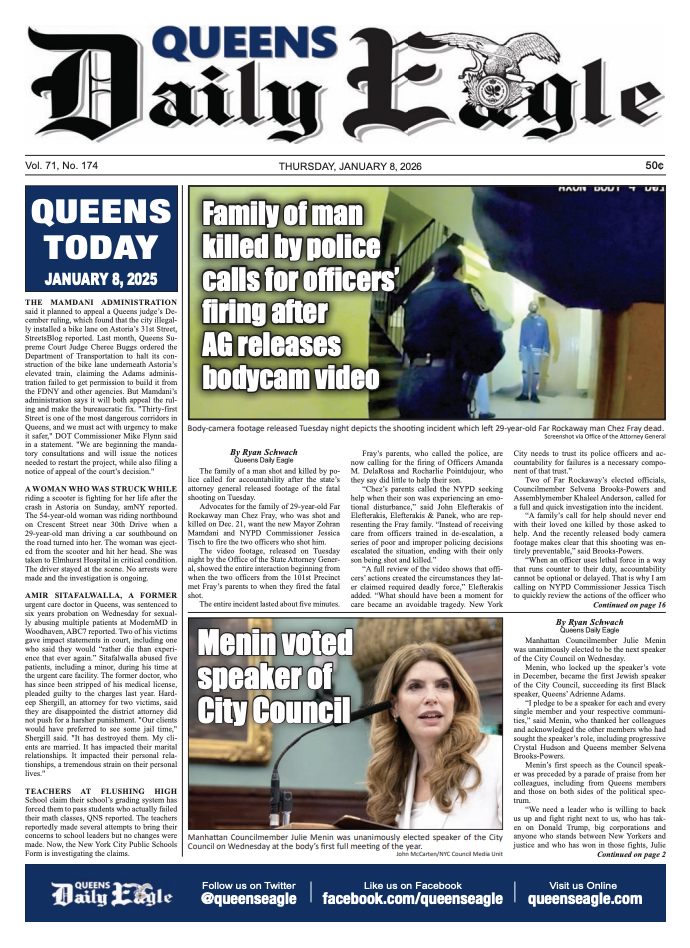New report outlines room for improvement on Queens’ trail network
/A new report outlines ways to improve Queens’ extensive trail network. Photo courtesy of Natural Areas Conservancy
Only 43 of Queens’ 76.4 miles of trails are formally recognized, but a new report and plan from the Natural Areas Conservancy analyzing trails across New York City’s parks is looking to improve the outdoor resource for visitors and nature alike.
The Strategic Trails Plan, issued in partnership with the Parks Department, issued six recommendations to strengthen the city’s trail systems by including better maps and cohesive trail management.
“Our goal is to create the kind of experience most New Yorkers think they need to leave the city to find, right here in the five boroughs,” said Sarah Charlop-Powers, the executive director and co-founder of Natural Areas Conservancy.
Among the recommendations are the creation of unified mapping, signage and design standards, decommissioning informal trails, restoring habitats and establishing regular trail maintenance and seasonal programming.
Recommendations focused on raising awareness for the parks include prioritizing community connections in neighborhoods adjacent to parks with nature trails and ensuring youth engagement by making every New York City public school student attend a ranger-guided nature walk before graduating.
Queens trails in Alley Pond Park, Forest Park and Cunningham Park ranked in the top five most extensive trails in the city at 21, 18 and 15 miles respectively.
The report found that because there was no specific division or unit at either organization responsible for the nature trails system, there was a tendency to have “conflicting priorities and activities” which, compounded by insufficient resources, led to a lapse in upkeep.
Authors suggested prioritizing securing funding and building support from sponsors and philanthropies to fund the trails, and dedicating a group of volunteers to assist in management at each trail to supplement the upkeep.
Similarly, issues with irregular maintenance and trail issues including a lack of public awareness, inconsistent definitions of which are official trails and navigation complicates the experience for unfamiliar visitors.
NAC hikers also recommended the creation of a trail at Alley Pond Park taking visitors to a glacier-formed moraine in addition to freshwater and saltwater wetlands, tidal flats, meadows, and forests that support a diverse bird population.
“We have spent decades restoring and caring for our natural areas, and I’m thrilled that we are now focusing on mapping and revamping our extensive trail system, making it easier to explore and navigate the natural beauty of our parks,” said Jennifer Greenfeld, the NYC Parks assistant commissioner for Forestry, Horticulture, and Natural Resources.
She said that the implementation of the plan is “a benchmark that will help to keep our trails on the right path well into the future.”




